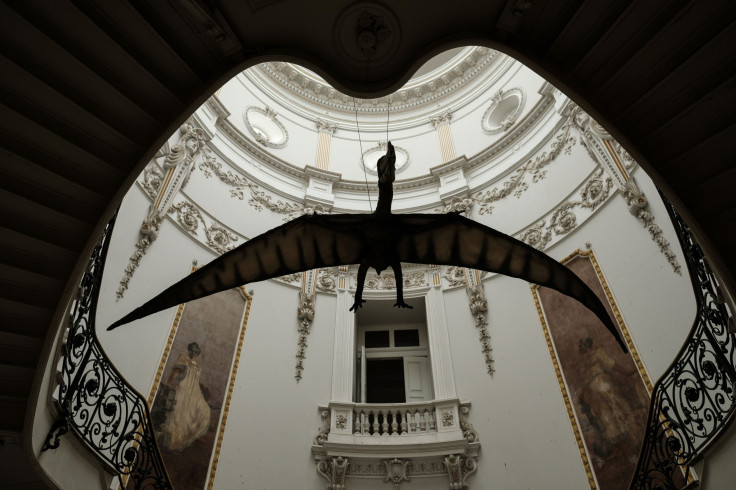Pterosaur Eggs Found In China Reveal Details About Prehistoric Flying Reptiles

Hundreds of millions of years ago, the world was either significantly cooler or far worse depending on who you ask.
Before humans showed up and started messing everything up, flying reptiles (but technically not dinosaurs) called Pterosaurs dominated the skies. They could be as small as a toy or as big as a fighter jet and, according to the American Museum of Natural History, they were the first non-insects to evolve powered flight.
Reported by the Los Angeles Times, science may have just gotten a revealing look at the early life of pterosaurs. Scientists from China and Brazil found hundreds of fossilized pterosaur remains, including eggs, in some sandstone in China. The full report is in Science magazine, but in summary, these remains left behind some valuable clues about the early lives of pterosaurs that we did not know before.
Per the Los Angeles Times, the reason this discovery is so much more revealing than previous egg findings is all of these eggs appear to be from the Hamipterus tianshensis species. It was not verifiable if earlier egg discoveries all belonged to the same species, so research was cluttered a bit.
The most intriguing detail that came from this find relates to the parental habits of pterosaurs. Some modern reptiles, like snakes, abandon their young immediately after giving birth or laying eggs, but pterosaurs may not have been the same way. The team in China found that the infant pterosaurs had underdeveloped wings but fairly developed legs, meaning they probably walked but not flew as babies. If that was the case, the parents likely stuck around for a while and helped out until the kids could fly.
The eggs found in China number at least 215, but BBC says they were likely not laid by the same female pterosaur. Due to the soft, delicate material the eggs were made out of (suggested by deformations), they were probably buried underground in huge bundles like this until maturation. Several reptile species nowadays also lay similarly fragile eggs.
Pterosaurs had impressive longevity, with the various species of pterosaur lasting around 150 million years. They evolved an impressive level of species diversity in that time, with different varieties of pterosaur having wildly different sizes and shapes. Unfortunately, they did not leave any direct descendants.
According to the American Museum of Natural History, one reason we do not know as much as we would like about Pterosaurs is they mostly lived far away from places where fossils are well preserved. It can often be difficult to find complete pterosaur skeletons, so scientists instead have to use parts from several different skeletons to paint the complete picture.
Pterosaurs may have gone extinct along with everything else dinosaur-adjacent 65 million years ago, but the fossils they left behind paint a valuable picture of reptilian evolution. The idea that the first flying vertebrate was not born with this skill is pretty fascinating, as is the idea that pterosaurs may have had maternal instincts to care for their young.
© Copyright IBTimes 2025. All rights reserved.




















